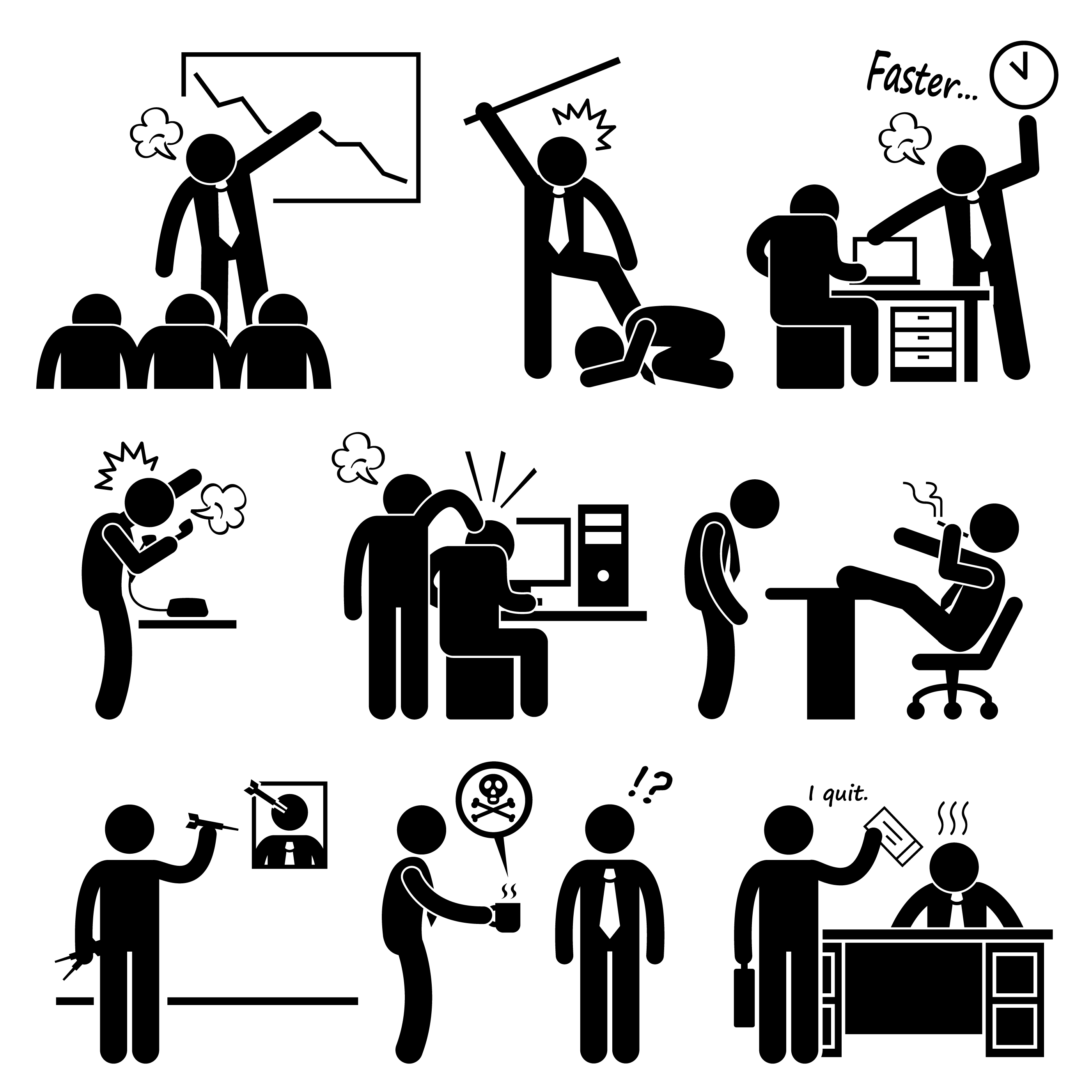 With one of the most complicated employment legislative systems in the world, we have recognised that you may often struggle to understand your obligations as an Australian employer. Workforce management is the management of workers in the business including family members. It includes recruitment, skills assessment, skill and career development, management of day-to-day activities, processes for communication and consultation and review of work.
With one of the most complicated employment legislative systems in the world, we have recognised that you may often struggle to understand your obligations as an Australian employer. Workforce management is the management of workers in the business including family members. It includes recruitment, skills assessment, skill and career development, management of day-to-day activities, processes for communication and consultation and review of work.
Impact on Bottom Line – A dysfunctional workforce management roadmap or ineffective personnel management strategy has long-term consequences for an organisation. It affects the performance of a business and the productivity levels of employees. Customer service on all fronts gets affected. The loss of customers and medium-term revenues is quite immediate. Over a period of time, the freefall leads to an impact on the bottom line of an organisation.
The Impact of Dissatisfied Employees – Employee satisfaction is important to your company’s overall success. The impact of dissatisfied employees can range from high turnover and low productivity to a loss in revenue and poor customer service. While a company’s philosophy, mission and values are fundamental to success, human capital is an organisation’s most valuable asset. Your organisation’s human capital, its employees must be fully engaged and satisfied to keep your business running.
Workforce Productivity – Dissatisfied employees tend to spend less time focusing on their job duties and more time discussing with family, friends and co-workers why they are unhappy at work. Lack of motivation and attention to detail are the results of dissatisfied employees, which translates to low productivity. Consequently, companies whose employees’ productivity levels are low also experience loss of profits. Satisfied employees make the most of their work time, producing quality products and services.
Customer Retention – Customer loyalty declines when employees are dissatisfied with their jobs. Employee satisfaction is one of the points HCL Technologies CEO Vineet Nayar explains in his Forbes website article titled “Why I Put My Employees Ahead of My Customers.” Nayar states that “Employees First, Customers Second is a management approach. It is a philosophy, a set of ideas, a way of looking at strategy and competitive advantage.” Satisfied employees, according to Nayar, are excited about doing their jobs. Employees who enjoy what they do, especially employees in the customer service arena, are more likely to interact with customers and clients in a much more positively and cheerfully. An oft-used business tenet is that happy employees equal happy customers.
Employee Turnover – When employees are terminated or resign, turnover analyses reveal that overall dissatisfaction is the cause for poor performance or the decision to leave. Consumed with looking for work that motivates them and finding a company that appreciates their efforts, employees slip into patterns of poor performance or simply quit. Turnover is costly. As turnover rates increase, dissatisfaction can spread throughout the workplace, encouraging others to find employment elsewhere. Employee retention, a workplace measurement related to turnover, can be extremely difficult in an environment where employees are frequently dissatisfied with their jobs or working conditions.
Business Reputation – Employees are the face of your organisation, which means your business reputation depends on employees’ behaviour, actions and performance. Improving employee satisfaction can work wonders for the way your business is viewed by competitors, customers, clients and people interested in working for you. Employee dissatisfaction impacts your ability to reach certain business markets as well as your ability to recruit qualified applicants. Business failure can be linked to variables such as financial distress or economic hardship; however, employees who are dissatisfied with their jobs and the company they work for can have a tremendous impact on your reputation and success.
Poor Management – Management of a business encompasses a number of activities: planning, organising, controlling, directing and communicating. The cardinal rule of small business management is to know exactly where you stand at all times. A common problem faced by successful companies is growing beyond management resources or skills.
People Leave their Managers not their Jobs
Research has shown that a majority of people leave their jobs not because they don’t like the work they do, but because they don’t get on with their Boss. The major reason cited in exit interviews is the relationship they have with their line manager, and as managers, we have a responsibility to consider the impact we have on those around us with our actions. There are a number of examples of poor management techniques which contribute to the breakdown in the relationship between management and staff, here are 10 of the most common:
- Not listening and not making people feel valued
People like to deal with those people who are professional and who make them feel valued. Too often a poor manager will not take the time to actively listen to their staff, instead choosing to check their e-mails, take phone calls and allow a variety of other interruptions whilst they are having a conversation/update/meeting with their people. How frustrating does it feel when you have the feeling that someone is not really paying attention to what you are saying? How do you think others feel when you are doing this to them?
- Micromanaging – shows a lack of trust
If you spend all your time checking up on what others are doing, how do you find the time to do your own job? People will never give of their best if they have the feeling that they are not to be trusted or that they constantly have someone looking over their shoulder and checking upon them. If you expect the worst of people that is what they will usually deliver, as that is what you are looking for!
- Not communicating expectations effectively

If people don’t have a clear understanding of what success looks like how will they know if they have done a good job? “If they don’t get shouted at,” is not the right answer! When people understand what is expected of them and how they can meet those expectations they tend to have a greater degree of confidence in their ability to meet those expectations, assuming those expectations are realistic in the first place!
- Not enforcing standards
People need to have a clear understanding of their roles and expectations, and it is equally important that having defined the standards that are expected, these are enforced. Too often a poor manager will fail to take the appropriate action when standards are not met and this then sends the message that the standards are not important or relevant. People respect a manager when they display strength, integrity and a sense of fair play. Not enforcing standards implies these qualities are lacking in a manager.
- Passing the buck
The art of good management means taking responsibility when it is due and allowing others to take credit when it is deserved. Poor managers look to point the finger of blame away from them at every opportunity, this only has short term benefits for the manager, as their limitations are soon identified.
- Lack of feedback – positive and negative
If you don’t take the time to tell people how they are doing, how will they know if they are meeting expectations? If they receive regular timely feedback they will have a greater understanding of what they need to do in order to achieve their objectives, be it a continuance of current behaviour or a correction in their activity. If the feedback is presented in a constructive, objective and calm manner it can be a great development tool to help people grow and improve.
- No sense of humour
If you don’t enjoy your job, why should the people that work for you? A sense of humour is a vital element in the makeup of successful managers, it indicates you are working for someone who is in control, someone who is relaxed and someone who is confident in achieving success. It doesn’t prevent you from being professional as there are a time and a place to have a laugh, and a time and a place to fully focus on achieving objectives, but a little lightness goes a long long way.
Management responsibilities can often ruin families and friendships. A challenging task that easily gets ignored to avoid confrontation, however, going undressed can ruin your business. Implementing a management and organisational plan to align with your business strategy, introducing employee job descriptions, introducing employee contracts and workplace compliant does not need to be a daunting task.
Let AAA Consulting help you to prepare a workforce management plan to increase staff awareness, staff happiness and business growth. Contact AAA Consulting for more information.

